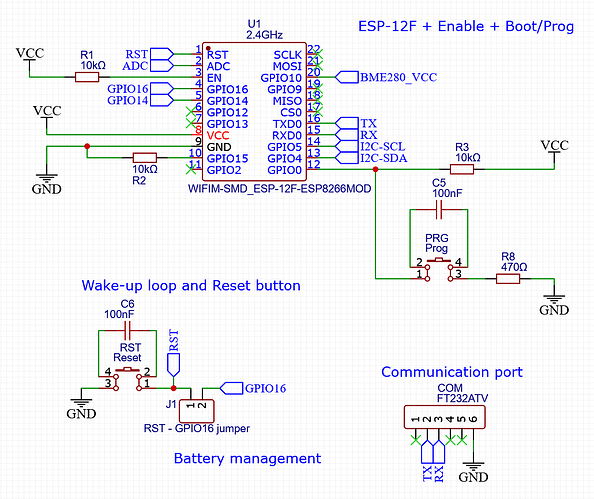Hi there!
So i've been developping and enjoying quite fancy (to me!) battery-powered thermometers. So far there is 9 of these working properly.
Wake-up, get measurements, connect to WiFi, send these into an InfluxDB database, deepSleep. Done between 0,5 and 2,5s on average. 40-ish µA consumption on deepSleep so battery should be fine for a large month if I take values every 2 minutes. I'll reduce measurements' frequency later.
Here is how I wired ESP-12F's:
I wanted to assemble and store remaining PCBs so I bought again some ESP-12F from the same AliExpress buyer.
What could happen, did happen: I got delivered another version, probably a lower quality clone.
Problem is that ESP-12F from my second delivery never wake up to run the sketch again.
So I had a look on boot modes and rst causes.
On power-on, i get an understandable rst cause:1, boot mode:(3,0)
After the deepSleep cycle OR if I hit reset during the deepSleep cycle, I only get ets Jan 8 2013,rst cause:2, boot mode:(3,2) and nothing happens.
After the deepSleep cycle OR If I hit reset button again, I get rst cause:2, boot mode:(3,6) and the thermometer does its work once.
I found online that pulling up to VCC MOSI or MISO pins could solve this problem, but it did not seems to work for me.
==> Does anyone have a lead for me to follow, please?
For me this can not be a sketch problem since I have 9 thermometers working just fine, but if sketch is needed, I'll translate comments and variables into English during the weekend.
Thanks a lot!
Thomas





